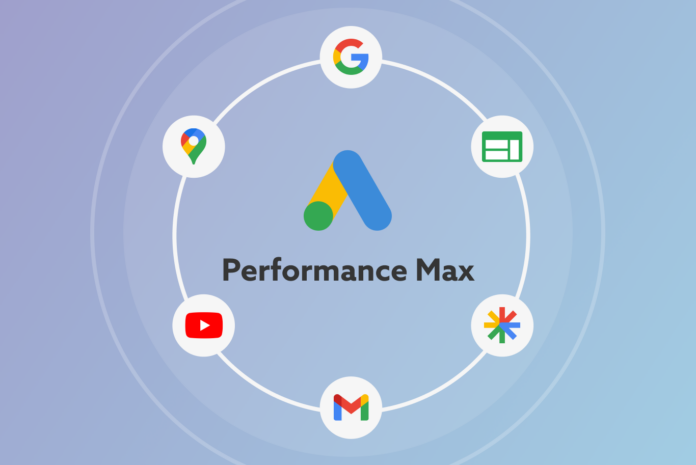Are you looking to get the most out of your performance marketing plan in 2024? You’ve come to the right place! In this blog, we’ll show you how to structure a successful Max campaign, so you can maximize your ROI and achieve long-term success. Get ready to exceed your goals and make the most of your marketing budget with our guide – let’s dive in!
Developing Performance Tactics

When constructing a marketing plan for your performance Max campaign, the key is to focus on developing strategies that will enable you to measure the success of your efforts. For any performance-based approach, it is important to identify and track relevant metrics—such as cost-per-click (CPC), click-through rate (CTR), cost per action (CPA) and other conversion metrics—to ensure your campaigns are meeting goals.
In developing tactical approaches for driving return on investment (ROI), there are several components to consider:
- Defining a target audience is critical for delivering an effective performance campaign. Setting appropriate filtering criteria such as location, demographics and interests can help you reach potential customers that are most likely to convert. In addition, leveraging data collected from previous campaigns can help in optimizing immediate tactics for maximum effect.
- Advance testing of copy and creative units across different formats like banners, carousels and videos will provide insights into the best performing content for each market segment or channel prior to launch.
- Tracking results against major KPIs should be done throughout the course of each campaign in order to ensure that success metrics are achieved and adjustments can be made when necessary. Creating few different creatives or setting up A/B split testing may also be beneficial in order to compare different tactics and assess as well as tweak investments if needed during mid-level strategy optimization sessions throughout the course of campaign time frames.
Implementing Performance Plans

This involves a thoughtful implementation process that consists of four distinct steps – planning, setting goals, monitoring and evaluating progress. Taking the time and effort to ensure each step is addressed properly will help you maximize the effectiveness of your performance plan and optimize its impact on your organization.
Planning: Before designing or implementing a Performance Max campaign, it is important to have an understanding of the specific needs that need to be met. This requires careful consideration of the overall goals and objectives intended for the program. Additionally, a thorough comprehension of existing organizational processes related to employee performance must be established in order to design an effective plan that works within existing structures.
Setting Goals: Once planning is complete, setting clear goals becomes essential for success. Defining attainable objectives will empower employees to stay focused and motivated throughout the duration of the program, as well as provide feedback loops for course corrections when needed. It is also important to set measurable metrics so desirable outcomes can be monitored through data tracking or analytics tools along with providing baseline benchmarks that establish program expectations.
Monitoring: To ensure a Performance Max program meets expectations, careful attention should be paid while monitoring progress towards desired results throughout its duration. Regular reviews are necessary in order to identify any potential issues with efficacy or identify areas of needed improvement by assessing improvements against desired benchmarks set previously during goal setting phases. Reports indicating rate-of-success can provide valuable feedback data necessary for continuous improvement initiatives as well as empower leadership team members in tracking program status in real-time right up until completion assessments occur.
Evaluating Progress: Following successful completion of a Performance Max campaign evaluation can result in invaluable information being collected which can later be leveraged during future implementations from lessons learned from initial campaigns as well as derived successes enabling continual optimization opportunities within other disparate business operations throughout an organization. Focused reviews should include all relevant stakeholders involved such as:
- Qualified personnel responsible for system setup
- Project sponsorships
- Onboarding training, etc.
Prior to taking any additional corrective measures when addressing identified deficiencies since root cause analysis may potentially guide optimal rectification tactics earlier identified issues before reinitiating further implementations down the road.
Monitoring Performance Results

Monitoring the performance of a Max campaign can help ensure that it meets its objectives. Doing so involves tracking target metrics over time and making any necessary adjustments to reach or exceed goals. Performance can be tracked using both manual and automated means. Manual tracking typically involves spreadsheets where data is manually entered and analyzed, while automated methods use dashboards or third-party applications to automate data collection and analysis.
Metrics to monitor when conducting a Max campaign include:
- Costs should be monitored to ensure the money spent on campaigns does not exceed budget levels.
- ROI should also be tracked in order to evaluate the return an organization gains from their Max efforts.
- Conversions should be checked to ensure users are taking desired actions after interacting with campaigns such as purchases or sign-ups.
- Impressions, clicks and views should also be tracked in order to measure engagement with ads and videos posted on Max channels regarding candidates running for office or other topics covered in campaigns managed by an organization.
By combining manual tracking of key performance indicators with automated means of gathering data from multiple channels and campaigns running on Max platforms (e.g., Facebook Ads Manager), organizations can gain visibility into how well their investments are paying off across multiple mediums for a holistic view of their return on investment (ROI). Organizations should set aside resources for collecting this data before launching a campaign in order to maximize results achieved for each unique effort deployed on Max channels.
Conclusion

This guide has provided you with all the foundational information you need to structure a successful performance Max campaign. You now understand the importance of measurement, optimization and testing, as well as how targeting and creative strategy impact performance. Knowing these essential pieces will help you build an effective campaign that your business can trust in order to reach its desired goals. With this valuable information fresh in mind, nothing should stop you from achieving your 2024 objectives!









